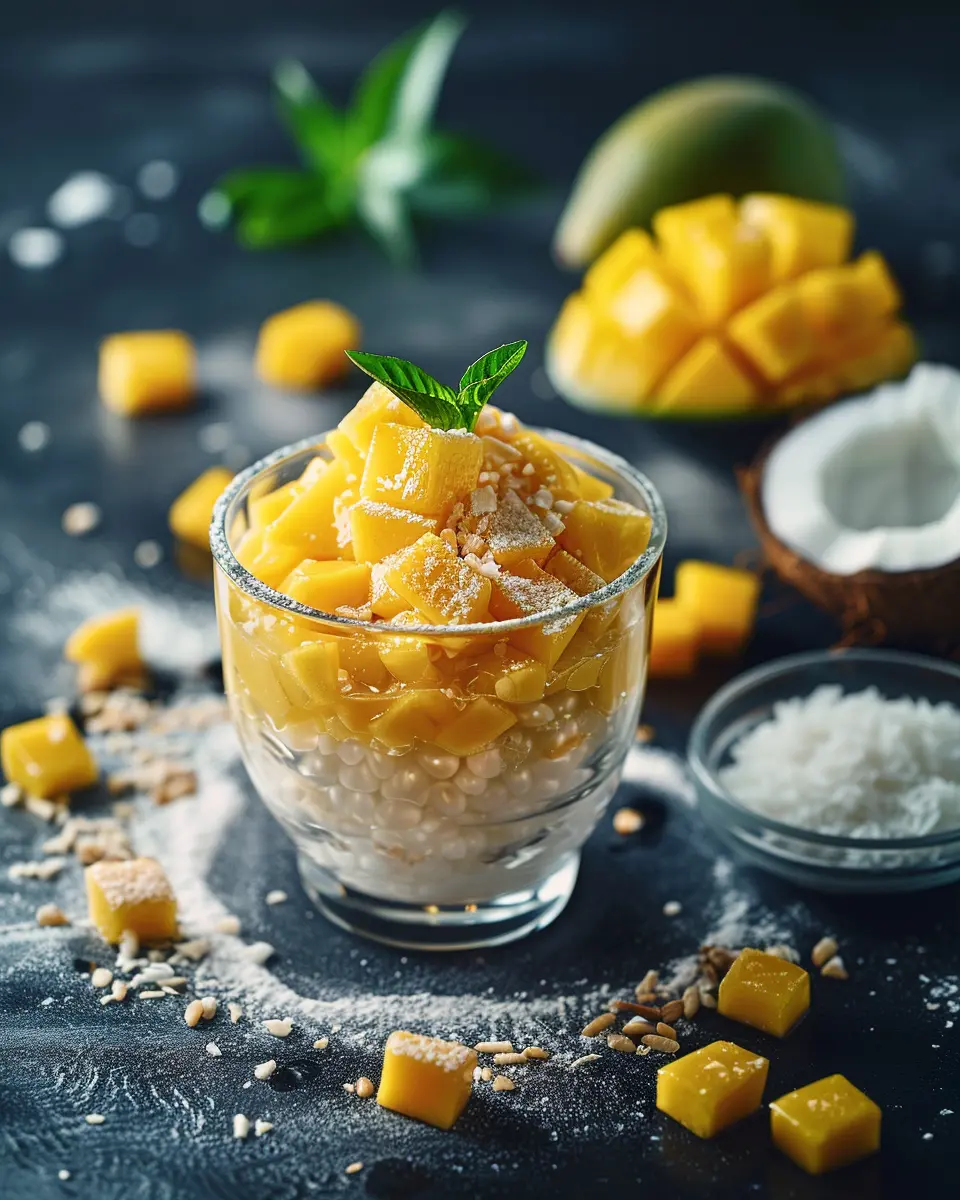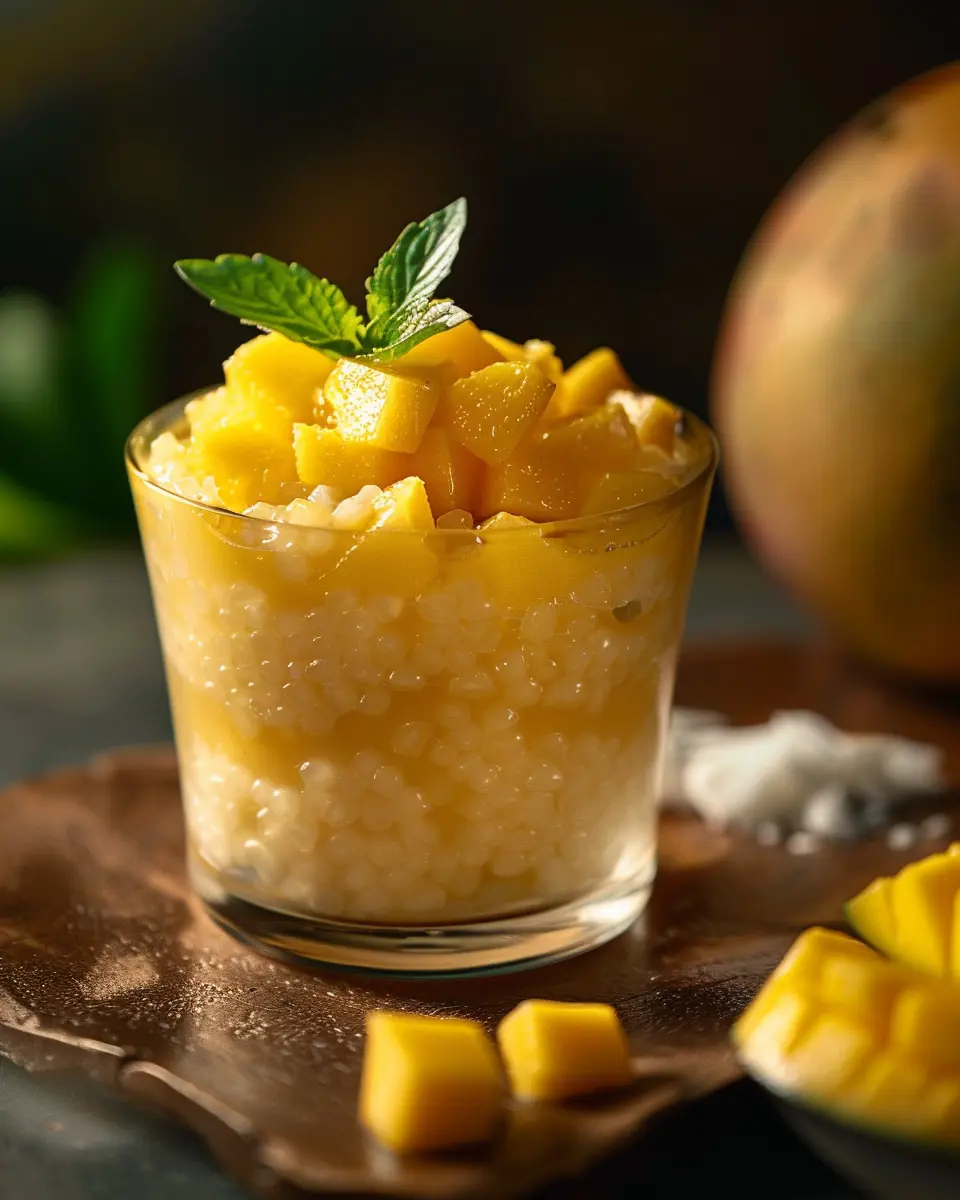Sago Delight: Discover 5 Exotic Sago Recipes to Elevate Your Taste Buds!
In this recipe:
- Explore 5 exotic sago recipes.
- Transform your palate with unique flavors.
- Learn simple steps to culinary delight.
- Combine tradition and innovation in your kitchen.
Have you ever wondered how to spice up your culinary routine? Look no further! Sago, the versatile starch extracted from tropical palm stems, is your ticket to an extraordinary taste adventure. Today, we’re diving into the world of sago recipes that promise to tantalize your taste buds with their exotic charm.
Indeed, embarking on a new flavor journey can be both exciting and daunting. Yet, with these five captivating sago recipes, you’ll effortlessly introduce a splash of the exotic to your dining table. Are you ready to impress your guests and treat your palate to a feast of textures and tastes?
Moreover, if you’ve enjoyed the sweet and sticky recipe for muscadine jelly, these sago dishes will be a splendid follow-up to your dessert repertoire. Or, if you’re looking to complement a savory dish like our meatloaf recipe without eggs, they’ll serve as a delightful counterpart.
Therefore, join us as we embark on this culinary quest. We’ve meticulously crafted each sago recipe to ensure your cooking experience is as enjoyable as the eating. Let’s get started and watch your ordinary meals transform into an array of sago delights!

Who Can Make Mango Sago
So, what about the ever-popular Mango Sago? Is this a dish reserved for seasoned chefs or can beginners take a crack at it? The answer is simple: Mango Sago for Beginners is not only possible, it’s a delightful challenge well worth undertaking. But first, let’s assess the Mango Sago Difficulty.
Fortunately, mango sago is quite forgiving. It requires a basic understanding of kitchen maneuvers but doesn’t demand high-level culinary skills. Essentially, if you can measure ingredients and stir, you’re well on your way to creating this delectable dessert. Now, onto the tools of the trade.
Kitchen Tools for Sago
Before diving into the recipe, make sure you have the essential Kitchen Tools for Sago:
- A pot for boiling sago
- A strainer for rinsing
- A mixing bowl
- A blender or food processor for the mango puree
- Measuring cups and spoons
With these tools in hand, you’re equipped to embark on your mango sago journey.
Now, for the novices: here are some tips to ensure your mango sago is a success. Firstly, be patient while boiling sago; they must be fully translucent with no white spots. Secondly, use ripe mangoes for the best flavor, and consider adding a touch of coconut milk for extra richness. Lastly, don’t forget to chill your dessert before serving—it enhances the flavors and provides the perfect texture.
For additional guidance on punctuation, such as when to use a hyphen, check out Grammarly’s blog.
Remember, mango sago is a versatile dessert that allows for creativity. So don’t be afraid to add your twist to it. Happy cooking!
Ingredients for Mango Sago
Now that we’ve covered the simplicity of the equipment needed, let’s pivot to the stars of the show—the Mango Sago Ingredients. Selecting the right components is crucial, as they will determine the richness and authenticity of your dessert. Have you ever experienced the disappointment of a dessert that looked good but didn’t quite hit the mark with flavors? That’s what we’re aiming to avoid. So, let’s ensure your mango sago is as delightful to the palate as it is to the eye!
Gathering Your Sweet Elements
Here’s what you’ll need to create this luscious treat:
- 2 large ripe mangoes – the heart of your Mango Sago Ingredients
- 1/2 cup of sago pearls
- 1 cup of coconut milk
- 1/2 cup of milk or cream (for a richer texture)
- 1/3 cup of sugar or any Sweeteners in Sago Recipe you prefer
- A pinch of salt to enhance the flavors
- Mint leaves for garnish (optional)
When selecting Ripe Mangoes for Dessert, opt for ones that yield slightly to pressure, indicating they’re just right for that natural sweetness and creamy texture we love. The mangoes should be fragrant and without blemishes, ensuring your dessert is as appealing as it is tasty.
As for sweeteners, granulated sugar is a classic choice, but feel free to get creative. Have you ever tried honey or maple syrup in your sago? These natural Sweeteners in Sago Recipe can add a unique twist to your dessert. Just remember, the type of sweetener you choose can subtly influence the final taste, so pick one that complements the mangoes beautifully.
Are you ready to take the next step? With your ingredients on hand, we’re about to embark on a culinary adventure that will end with a bowl of heavenly mango sago. Let’s get to it!

Step-by-Step Guide to Making Mango Sago
Now that you’ve got all your ingredients ready, let’s dive into the exciting process of How to Make Mango Sago. Are you ready to transform these simple ingredients into a delightful dessert? Let’s get started!
Cooking Sago Pearls
First, we’ll tackle the sago pearls. To achieve that signature chewy texture, follow these steps:
- Bring a large pot of water to a rolling boil. You’ll want enough water to give the pearls plenty of room to move around.
- Gently pour in the sago pearls, stirring occasionally to prevent sticking.
- Boil for about 10-15 minutes or until they start to turn translucent. Keep an eye on them; we’re aiming for an al dente texture.
- Turn off the heat, cover the pot, and let the pearls sit for another 10 minutes to finish cooking in the residual heat.
- Drain the pearls and rinse under cold water to stop the cooking process and remove any excess starch.
- Set the cooked pearls aside in a bowl of cold water to keep them from sticking together.
With your Cooking Sago Pearls mission accomplished, let’s move on to the mangoes.
- Peel and dice the ripe mangoes, reserving a few slices for garnish.
- Place the diced mangoes in a blender and puree until smooth.
- Mix the mango puree with the drained sago pearls, stirring gently to combine.
Now, it’s all about balancing the flavors. Depending on the sweetness of your mangoes, you might want to add a little sweetener. Honey, sugar, or a sugar substitute can work wonders here. And for that creamy touch, mix in some coconut milk, dairy milk, or a non-dairy alternative until you reach your desired consistency.
There you have it, your very own Mango Sago Recipe is ready to impress. Chill it in the fridge for an hour before serving to let the flavors meld together beautifully. Don’t forget to garnish with those mango slices you set aside. Enjoy every spoonful of this refreshing dessert!
Serving and Storing Mango Sago
Now that you’ve mastered the art of making this delightful dessert, let’s dive into the best ways to serve and store your Mango Sago. The journey from raw Mango Sago Ingredients to a succulent sweet treat is quite rewarding, isn’t it? Ensuring your sago pearls are cooked to a translucent, chewy perfection is crucial. Have you ever experienced the joy of biting into perfectly cooked sago pearls? It’s like a little burst of happiness!
Once your sago is ready, the magic happens when you blend the Ripe Mangoes for Dessert into a smooth puree and mix it with the sago. The vibrant color and aroma that ripe mangoes bring to the table are simply irreplaceable. Now, how do you like to balance the sweetness in your desserts? Adjusting the Sweeteners in Sago Recipe to your taste is key. Whether you prefer the natural sweetness of mangoes or a dash of sugar, honey, or even agave, the power is in your hands.
Ready to Indulge?
When it’s time to serve, consider portioning the Mango Sago into individual bowls or glasses. This not only makes for an elegant presentation but also allows for easy storage should you have leftovers. Speaking of leftovers, how should you store this delightful dessert? Simply cover the bowls with plastic wrap or transfer the Mango Sago into an airtight container. It will stay fresh in the refrigerator for up to two days, though I must ask – can you resist not finishing it all in one go?
Remember, the taste of Mango Sago is best when chilled, so give it some time in the fridge before serving. This allows all the flavors to meld beautifully. And if you’re looking to add a little extra oomph, a dollop of coconut cream or a sprinkle of toasted coconut flakes can elevate this dessert to new heights. Ready to dig in and enjoy the fruits of your labor? Go ahead, you’ve earned it!

Pro Tips for Perfecting Your Mango Sago Recipe
- Firstly, select mangoes that are sweet and fully ripe for a rich flavor.
- Moreover, soak sago pearls before cooking to reduce preparation time.
- Always stir sago pearls gently to prevent them from sticking together.
- Furthermore, use coconut milk for a creamy texture and tropical taste.
- Additionally, chill the dessert before serving for a refreshing experience.
- Finally, garnish with mint leaves or mango chunks for a visual appeal.
FAQs and Tips for Mango Sago
Have questions about making the perfect Mango Sago? Or perhaps you’re looking for ways to enhance this delightful dessert? Look no further! We’ve compiled a list of frequently asked questions and expert tips to help you create a Mango Sago that’s not only delicious but also suits your dietary needs and budget.
Popular Questions on Making Mango Sago
Q1: What are some Mango Sago Ingredient Substitutes for those with dietary restrictions?
A1: For a dairy-free version, use coconut milk instead of regular milk. If you’re avoiding refined sugar, sweeten your Mango Sago with honey or agave syrup. For a gluten-free option, ensure that the sago pearls you purchase are certified gluten-free.
Q2: How can I save money when preparing Mango Sago?
A2: Consider using frozen mangoes instead of fresh ones to cut costs without sacrificing flavor. Additionally, bulk-buying sago pearls and using them in different recipes can be more economical.
Q3: What are some expert tips for Improving Mango Sago?
A3: To enhance the flavor, use ripe mangoes for a natural sweetness and a vibrant color. Gently simmer the sago pearls until they’re translucent to achieve the perfect texture. A splash of lime juice can add a refreshing zing that complements the sweet mango.
Cost-Effective and Flavorful Tips
Q4: Are there cost-effective substitutes for pricier ingredients in Mango Sago?
A4: Yes, you can use evaporated milk as a substitute for cream for a similar richness at a lower cost. Also, consider making a larger batch and storing portions in the fridge for future servings, which can be more cost-effective.
Q5: How can I enhance the texture of my Mango Sago?
A5: For a smoother texture, blend part of the mango into a puree and mix it with the sago. Chilling the dessert before serving can also help the sago pearls firm up and give a more pleasant mouthfeel.
For more delightful recipes and tips on creating the perfect Mango Sago, check out Catherine’s Mango Sago recipe.











